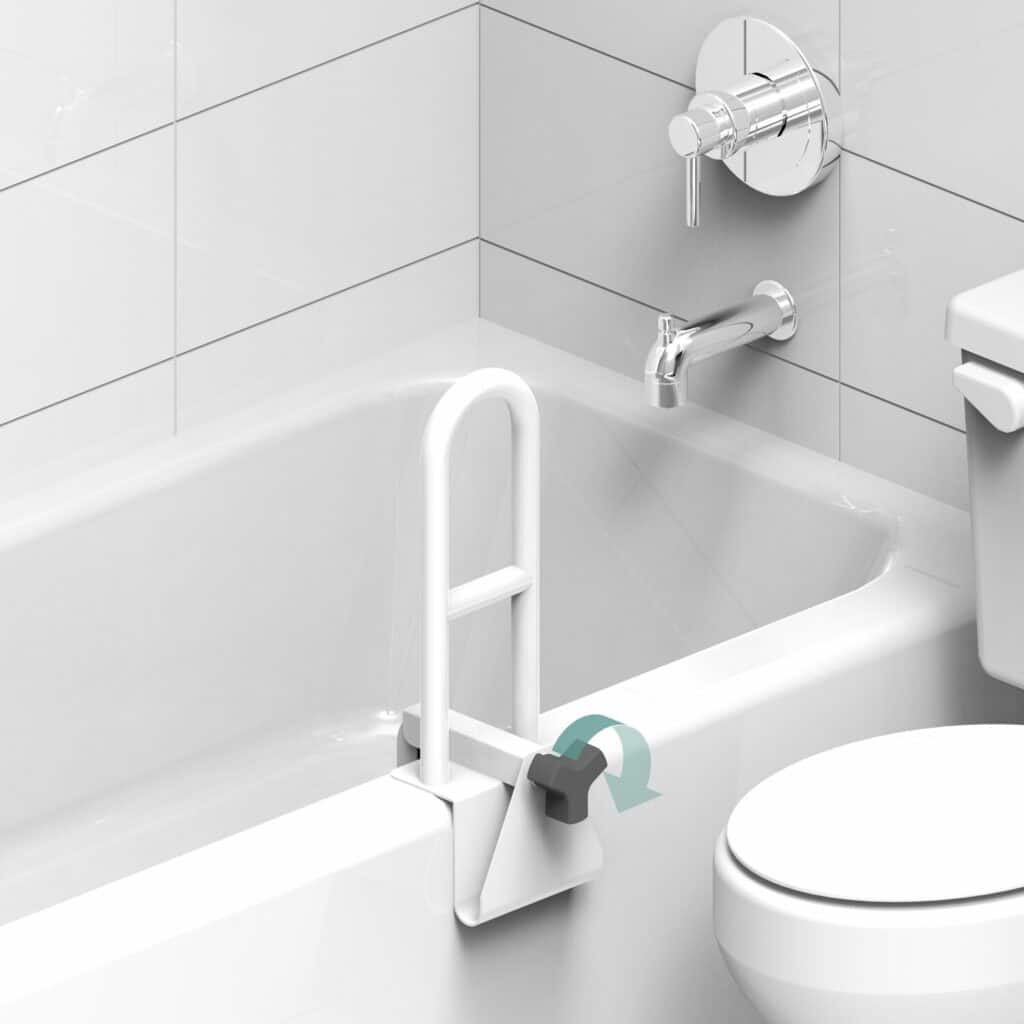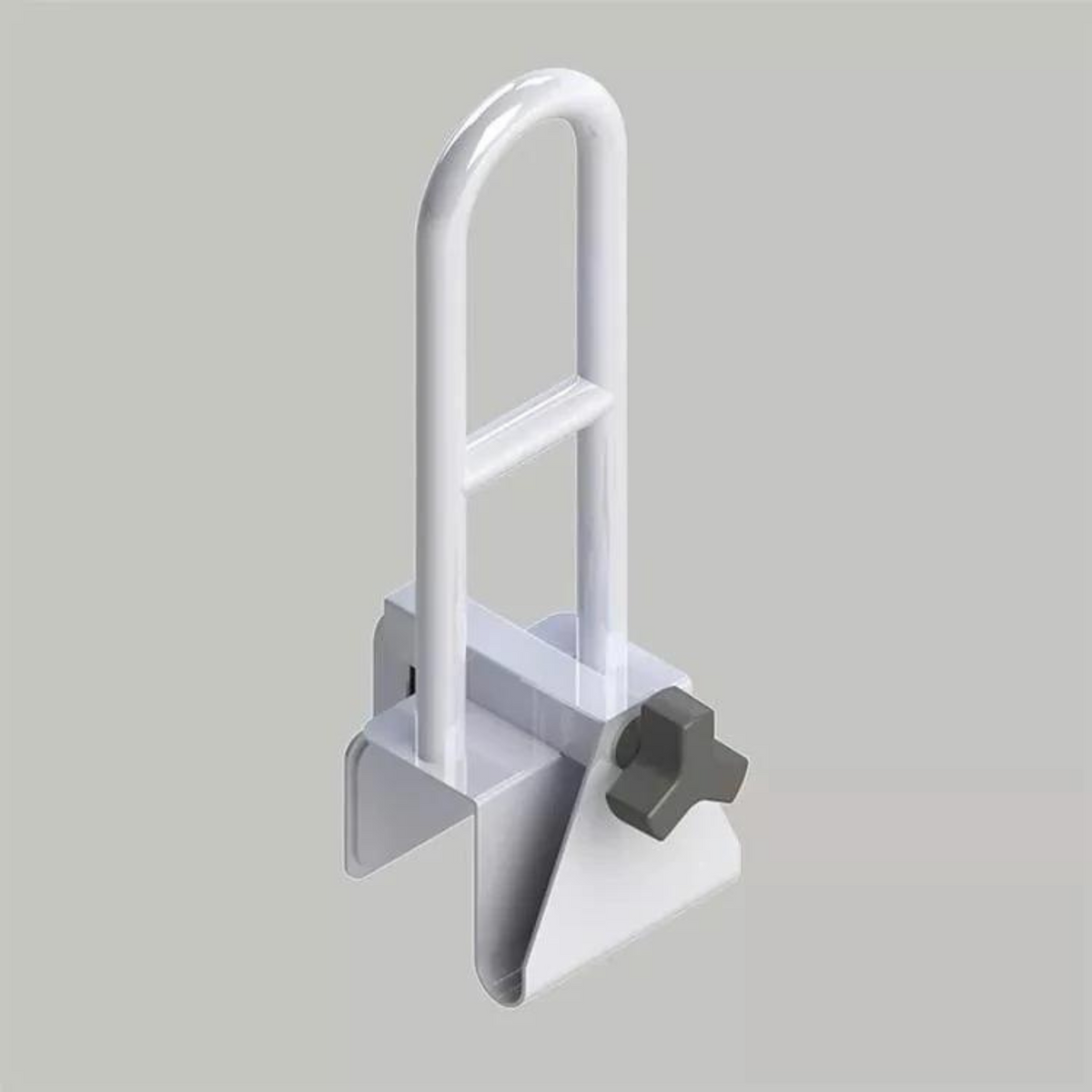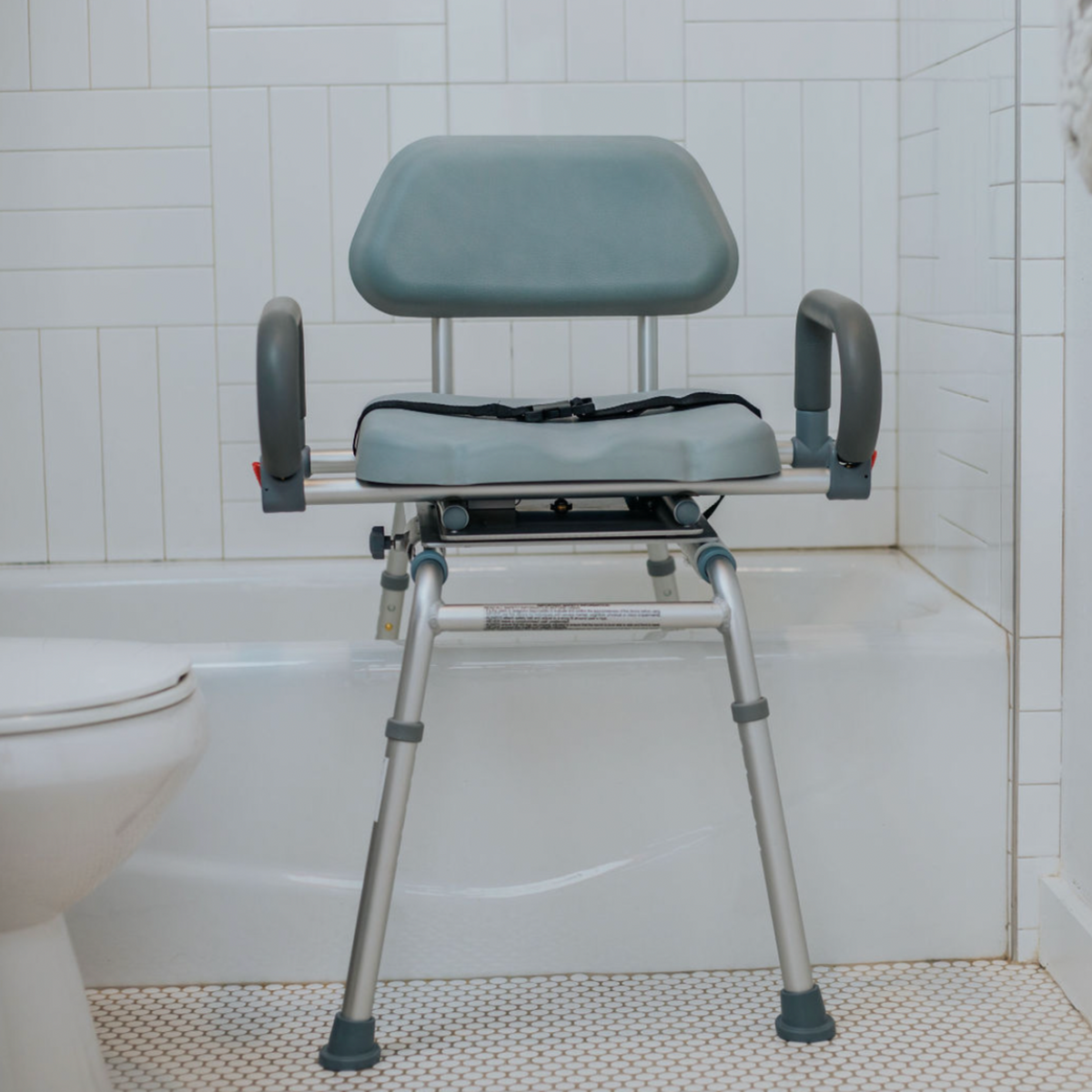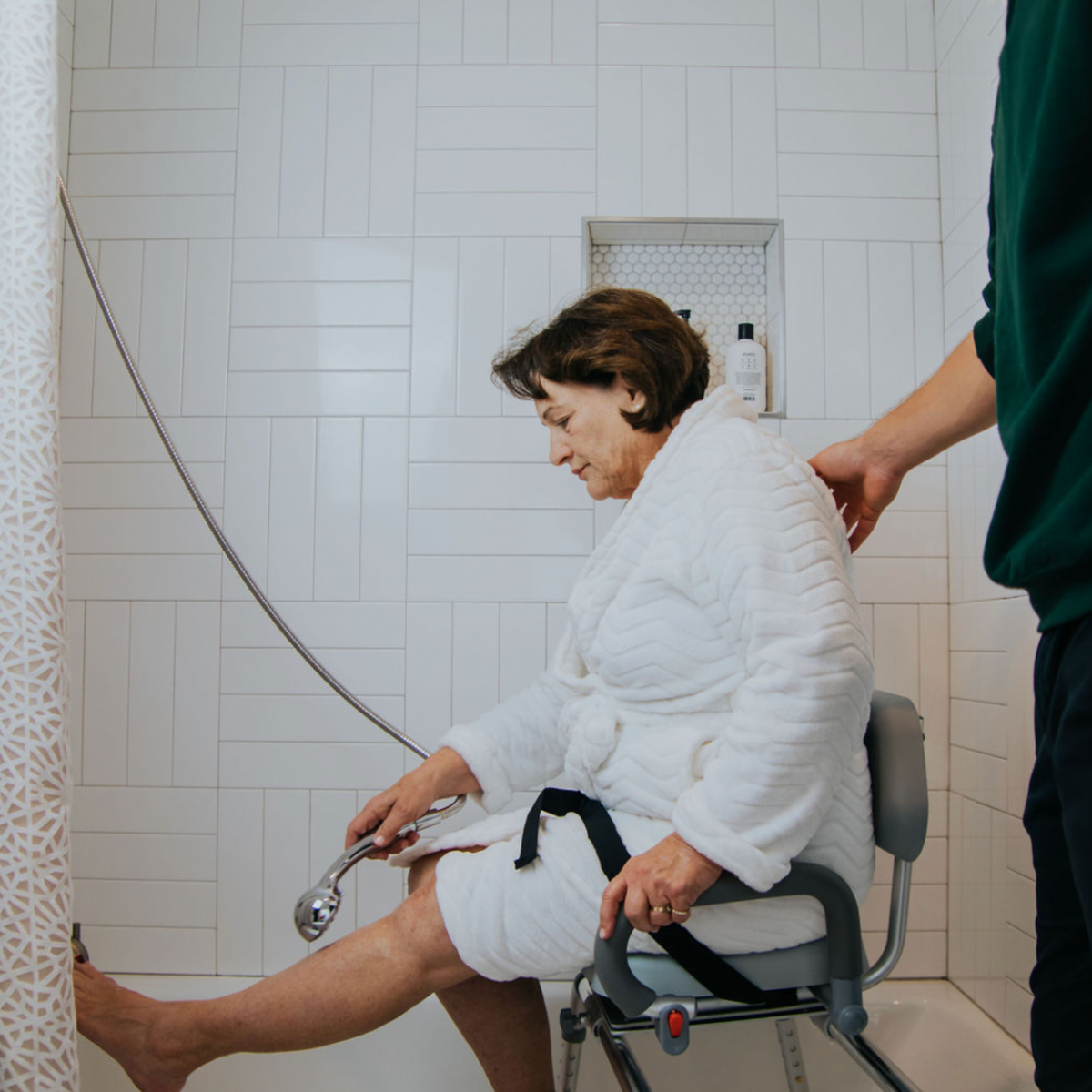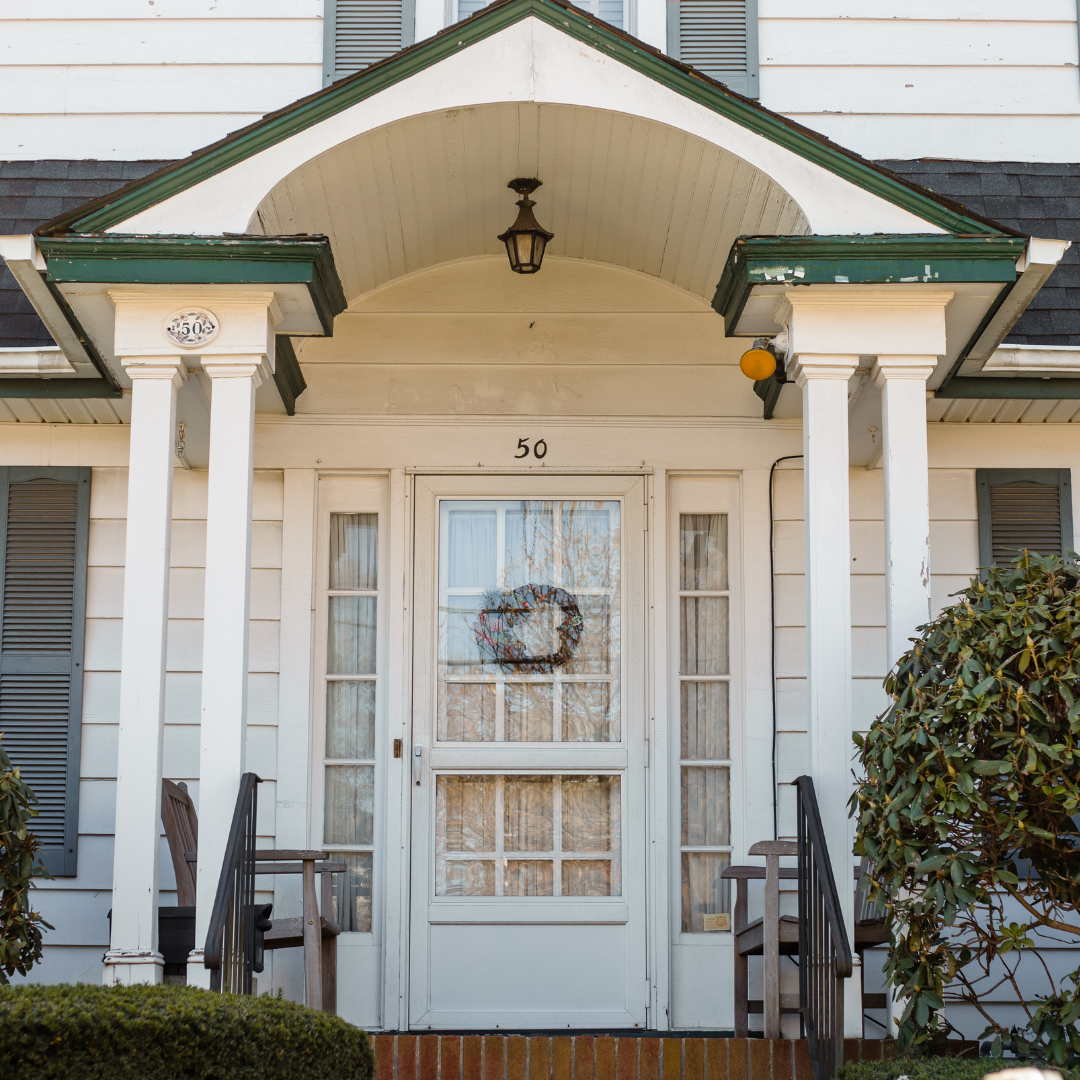If you or a loved one rents, you may be wondering if there are any home modifications that you can reduce fall risk at home and ultimately make the living space safer.
Well you're in luck!
In fact, there are many accessible home modifications that can be made without making permanent changes to the structure of your home and don't require a landlord to approve.
What changes can you make to a rental home?
Under the Fair Housing Act, landlords are required to make reasonable accommodations for tenants who need additional safety support at home. Unfortunately, oftentimes renters are unaware of this and it’s not uncommon for landlords to take advantage of this. We suggest you talk with Jukebox Health’s support team to learn more about your rights as a renter, especially if you will be needing more intensive modifications such as door widening or ramp installation.
That being said, there are a variety of home modifications that can be made without any major structural changes to the home. Some of these accessible home modifications include:
- Clamp-On Shower Grab Bars
- Toilet Seat Risers
- Shower Chairs or Transfer Tub Benches
- Motion Activated Lighting
- Rug Tape
Clamp-On Shower Grab Bars
Nearly 30% of falls at home happen in the bathroom. Because of this it's important to implement solutions that will support someone while navigating slippery surfaces. One great solution is clamp-on shower grab bars. These grab bars a great way to make your bathroom more accessible, without causing any damage. Instead of being installed into the wall like normal grab bars, these are placed on the edge of the tub to provide extra stability when getting in or out of the tub.

Toilet Seat Risers
Another area of concern for many people is their safety when using the toilet. As we get older it can be more difficult to sit down or stand up from the toilet and if we find ourselves with balance issues this only increases our risk of falling. That’s why adding a raised toilet seat is a great solution. This modification is not only cost-effective but is also not permanent! These risers are designed to raise the height of the toilet seat to reduce the amount of energy it takes to sit down or stand up from the toilet. In addition, these can be easily installed over an existing toilet seat.

Shower Chairs or Transfer Tub Benches
As we age, all of us experience more weakness in our muscles which can make standing for long periods of time more difficult. If this is the case for you or a loved one, a shower chair or tub transfer bench may be an appropriate option. These chairs and benches are easy to assemble products and can be placed in any type of bathing area. They provide a place to easily sit while bathing, which can make the bathing faster and ultimately safer.

Motion-Activated Lighting
It may be helpful to increase the home’s lighting. Especially if you notice dim lighting in the bathroom or the bedroom. One of the easiest ways to improve visibility and reduce the risk of falling is by installing motion sensor lighting. This type of lighting can be installed nearly anywhere in the home and also eliminates the need to reach for light switches in the middle of the night.

Rug Tape
Lastly, loose or slippery rugs can be a tripping hazard for anyone but especially for older adults. One of the easiest ways to improve safety at home is by making sure all rugs are fully secure to the ground. This can be easily accomplished through a rug tape, a nifty and low-cost solution that ensures rugs stay put. This tape is double-sided and is specifically designed to work on a variety of flooring including - carpets, tiles, wooden floors and concrete.

Does my landlord have to provide alternative accommodations?
Sometimes there will be modifications that you really need but would cause structural changes. These modifications may include:
- Installed grab bars
- Widening doorways
- Lowering kitchen cabinets
- Installing a ramp
-
Review the Fair Housing Act: Be sure to review Section 504 that provides you a clear understanding of what rights you have to make modifications within your living environment.
-
Know Your Pricing Options: Unfortunately renters typically bear the cost of modifications. Though the Fair Housing Act does require your landlord to allow reasonable accommodations, in most situations they are not obligated to pay your changes. If this is the case for you, we recommend you talk with a Jukebox Health Client Care Coordinator. We are more than happy to explore other financing options with you.
-
Work with Jukebox Health: It’s important you work with a home safety expert to understand the home modifications available to renters. Please schedule a meeting with us to discuss and provide advice on the best plan of action.




